Description
Benzoic Acid: A Versatile Compound with a Wide Range of Applications
Benzoic acid, a colorless crystalline solid with the chemical formula C₇H₆O₂, is a naturally occurring organic acid found in many plants and is a vital ingredient in various industries. Its applications range from food preservation to pharmaceutical manufacturing, highlighting its versatility and importance. This article explores the properties, uses, and safety aspects of benzoic acid.
Properties and Production:
Benzoic acid is distinguished by its aromatic ring attached to a carboxyl group (-COOH). This structure contributes to its key properties:
- Appearance: Colorless crystalline solid.
- Odor: Faint, characteristic odor.
- Solubility: Slightly soluble in water, but more soluble in organic solvents like alcohol and ether.
- Acidity: A weak acid, meaning it only partially dissociates in water.
Historically, benzoic acid was extracted from benzoin resin, a fragrant resin obtained from certain trees. Today, it is primarily produced industrially through the catalytic air oxidation of toluene, a process that is both efficient and cost-effective.
Uses and Applications:
Benzoic acid’s wide applicability stems from its antimicrobial properties and its role as a precursor in synthesizing other valuable chemicals. Key applications include:
- Food Preservation: Benzoic acid and its salts, like sodium benzoate, are widely used as food preservatives, particularly in acidic foods like fruit juices, pickles, and condiments. They inhibit the growth of bacteria, yeast, and molds, extending shelf life and ensuring food safety.
- Pharmaceuticals: Benzoic acid is used in the production of various pharmaceutical products. It can be found in topical antifungal medications and is used as an antiseptic. It also serves as a building block for synthesizing drugs that treat various conditions.
- Industrial Applications: As a precursor, benzoic acid is used in the production of numerous important industrial chemicals, including:
- Benzoyl Chloride: A key intermediate in the synthesis of dyes, perfumes, pharmaceuticals, and resins.
- Plasticizers: Certain esters of benzoic acid are used as plasticizers, adding flexibility and durability to plastics.
- Cosmetics and Personal Care: Benzoic acid and its salts are used as preservatives in cosmetics and personal care products, preventing the growth of microorganisms and extending the product’s usable life.
- Animal Feed: Benzoic acid is sometimes added to animal feed to improve digestibility and promote growth.
Safety Considerations:
While benzoic acid is generally considered safe for use in food and cosmetics within regulated limits, certain safety considerations should be taken into account:
- Allergies: Some individuals may experience allergic reactions to benzoic acid or its salts, manifesting as skin irritation or respiratory issues.
- Ingestion: While generally safe in low concentrations, high doses of benzoic acid ingestion can cause nausea, vomiting, and abdominal pain.
- Regulation: The use of benzoic acid as a preservative is subject to regulations and maximum permissible levels in various countries to ensure consumer safety.
Environmental Impact:
Benzoic acid is biodegradable and is generally considered to have a low environmental impact. However, proper disposal of waste containing benzoic acid is essential to prevent potential water contamination.
Conclusion:
Benzoic acid is a versatile and valuable compound with a wide range of applications across various industries. Its effectiveness as a food preservative, its role in pharmaceutical manufacturing, and its importance as a precursor to other valuable chemicals highlight its significance. While safety considerations exist, benzoic acid remains a crucial ingredient in various products that contribute to our daily lives, underscoring the importance of understanding its properties and appropriate usage.

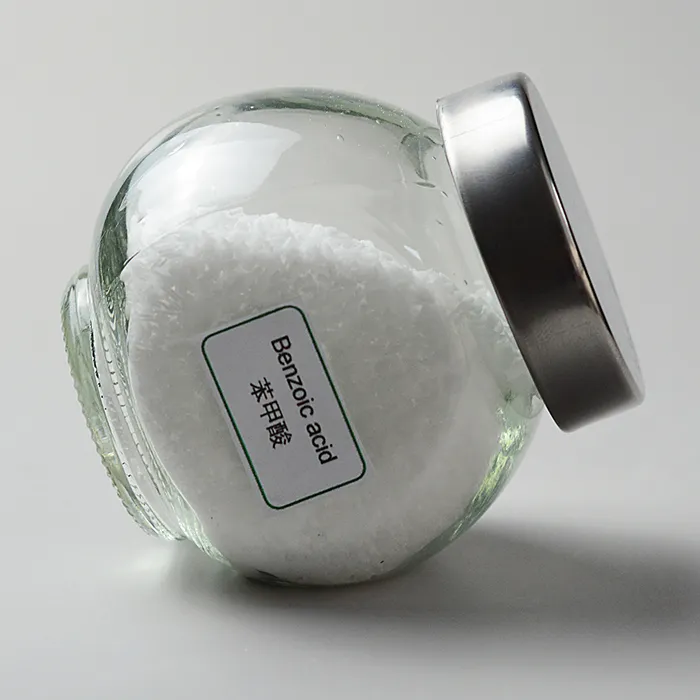
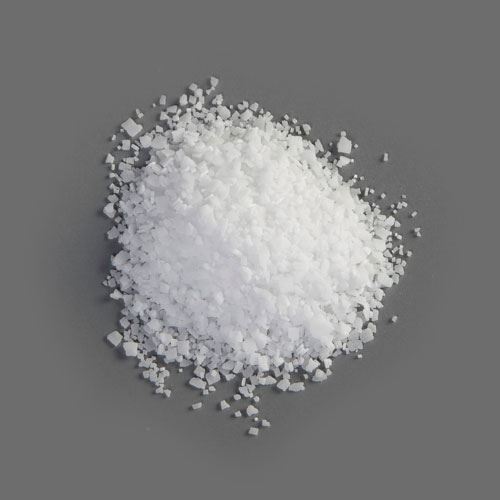

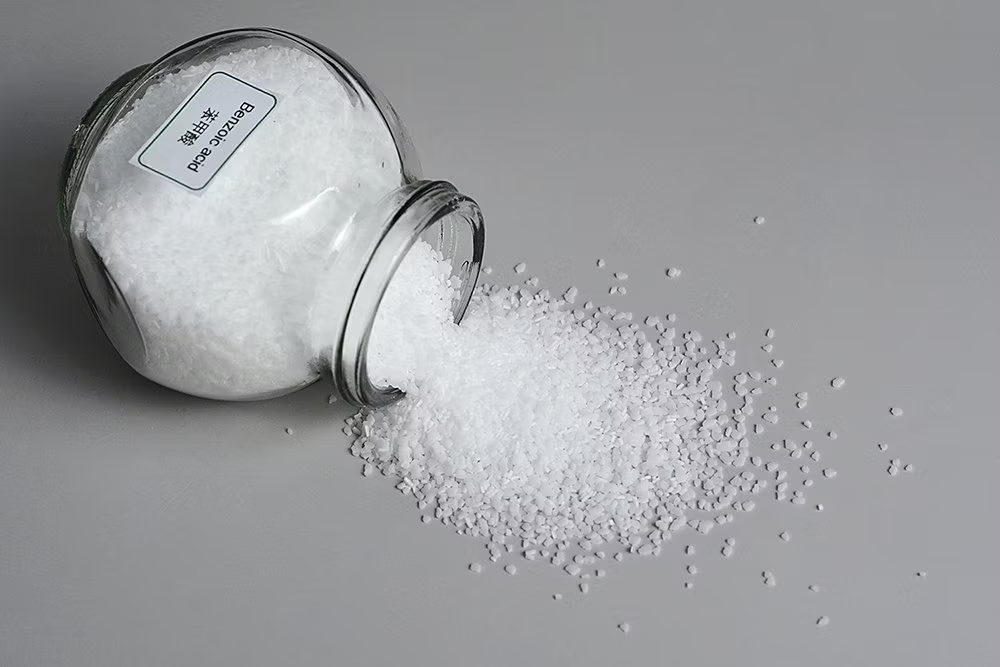
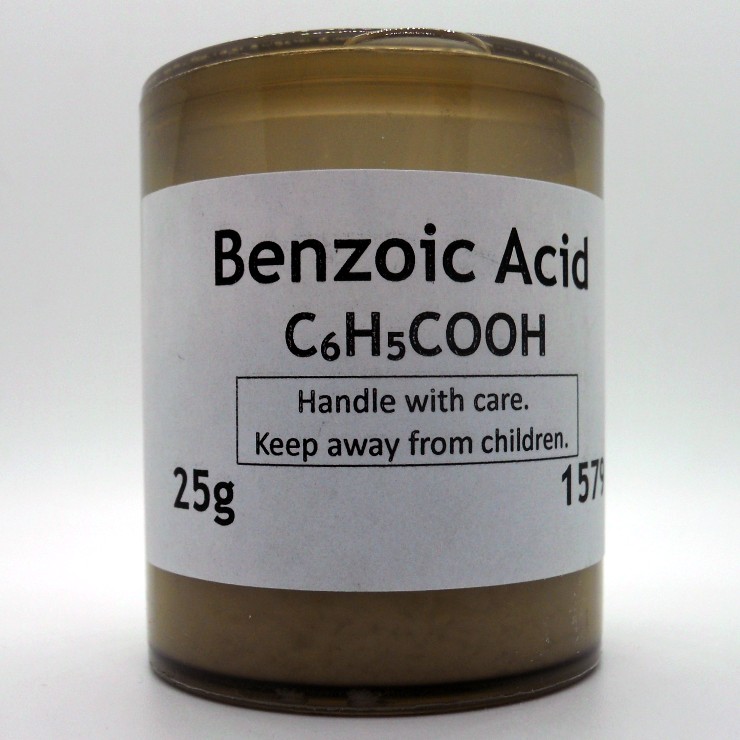

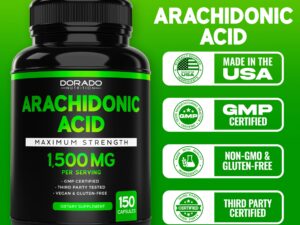
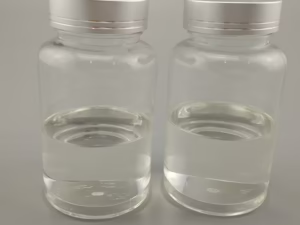
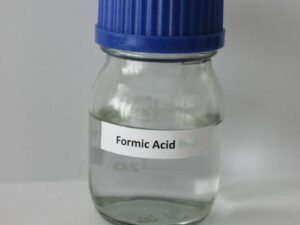
Reviews
There are no reviews yet.